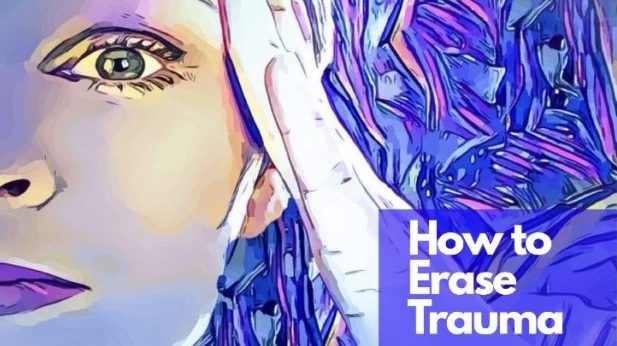If you have a trauma memories that carries over into adulthood, you should immediately find ways to heal it. The reason is, trauma memories makes your emotions continue to flare up when faced with the trigger.
Without realizing it, deep trauma memories in the past can negatively affect your career, relationships, health, and even your entire life.
How to Get Rid of Trauma Memories
To get rid of trauma memories, first you need to start the process you should’ve been doing since the event occurred. But nothing is impossible, even though it takes time you still have hope to recover from past trauma. Check out below tips to get rid of trauma memories according to the study:
1. Try to Focus on Yourself
To begin the trauma healing process, try to find a quiet place where you can focus and won’t be distracted. Make sure you wear comfortable clothes to start this one process. If so, sit comfortably on the floor with your eyes closed.
Take a deep breath, then focus and feel your own awareness. Feel how cool the floor you are sitting on. Imagine the energy flowing from your tailbone to the floor where you are sitting. Focus on your own body without being distracted by anything else.
2. Recall Past Memories
Now, try to think back to a situation or event that upset you recently. Then, find something that triggers your emotions. Think back to as much detail as possible and imagine yourself in that time. Try to see and feel again the emotions that arise at that time.
3. Feel the Emotions
Next, breathe deeply until you can calm down again. Then, let your body feel a variety of emotions. Try to observe and focus on the physical response that occurs at that time, whether it is tingling, tightness, headache, or others.
These sensations will later be needed to re-understand the trauma memories that you have experienced. After you have felt these sensations, describe these feelings to yourself in as much detail as possible as if you were talking to yourself in your heart.
4. Identify and Name Each Sensation
When you feel a turbulent emotion, try to relate it to the sensation you felt at that time, does anxiety make your chest tight or is there an angry feeling that makes your body feel hot? Try to feel it and tell yourself what you feel in your heart. Recognizing these sensations will make it easier for you to understand yourself and your body.
5. Love Every Emotion and Sensation That You Felt
In order to heal your childhood trauma, you need to be able to accept everything your body feels. Tell yourself that you like and enjoy feeling these emotions.
Do this with any emotions you are feeling such as “I love myself because of my feelings (anger, sadness, anxiety, etc.). By loving every emotion you feel, you will slowly accept that it is normal.
Check out how to handle anxiety here.
6. Try to Feel and Do
Stay focused on the emotions and sensations that go with it. Let these feelings sink in and just flow. Don’t try to hold it in or hide it. Then, let the body respond to emotions and sensations with things it wants or needs to do.
If you feel like crying, then cry your heart out. Likewise if you want to scream or hit something. Do what your body wants at that moment. You can shout out loud or punch with your eyes closed and still in the same position.
7. Get the Message
Are the emotions you are feeling now connected to a traumatic past event? Are you starting to realize the negative things that limit you are the result of childhood trauma? If so, pay close attention and take the moral message. You can definitely find it.
However, if you feel like you’re getting nothing, try writing down all the feelings and emotions that you feel on a piece of paper. Do this for 10 minutes without stopping. Then, think about what message your emotions are trying to send right now.
8. Try to Share with Others
Do you have someone comfortably with whom you can talk about feelings? If so, try telling him how you feel right now. If not, however, write down any feelings you had about your childhood trauma.
Write down what events triggered the start and how you reacted at that time. Then, write down how you feel right now. Don’t think that this is pointless. Even though it may seem trivial, sharing stories by speaking or writing them down is an effective way to get out the emotions that have been latent.
9. Take it off and Throw it all Away
After you tell or write down all the things you feel, it is time for you to do a “ritual” to release emotions from the previous trauma. You can do this by burning the letter that you just wrote or throwing away the object that made your childhood trauma appear.
Either way, the point is to let go and get rid of anything that might remind you of it. Eliminate the trauma, emotions, and sensations that come with it by removing and letting go of everything associated with it.
Get Expert Help
If you feel that this method is not working, ask for expert help. Talk to a psychologist or professional therapist about your childhood trauma to find out how to treat it best.
Various types of therapy may be suitable for dealing with the trauma you have experienced to date. Never be embarrassed to ask for professional help for a much better quality of life.






